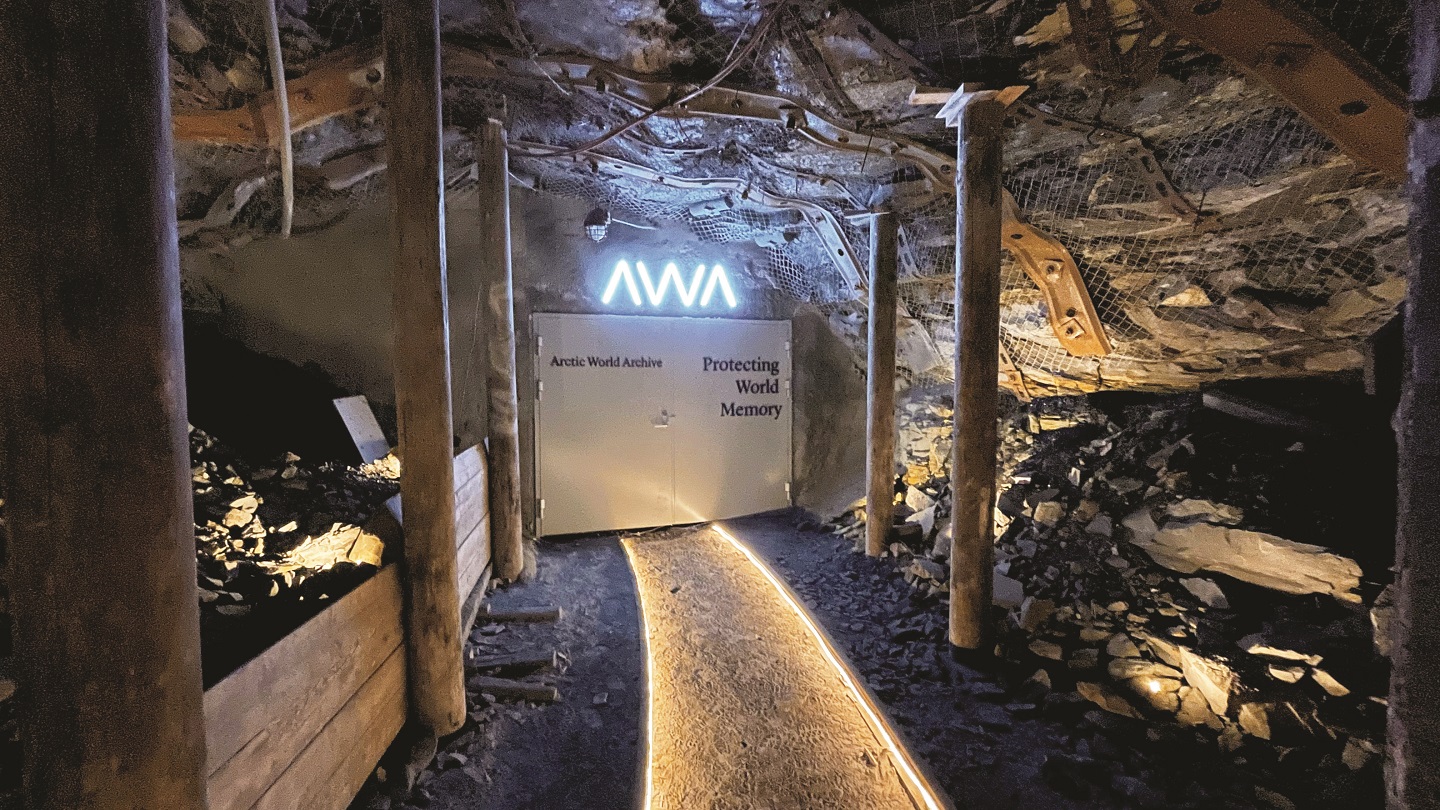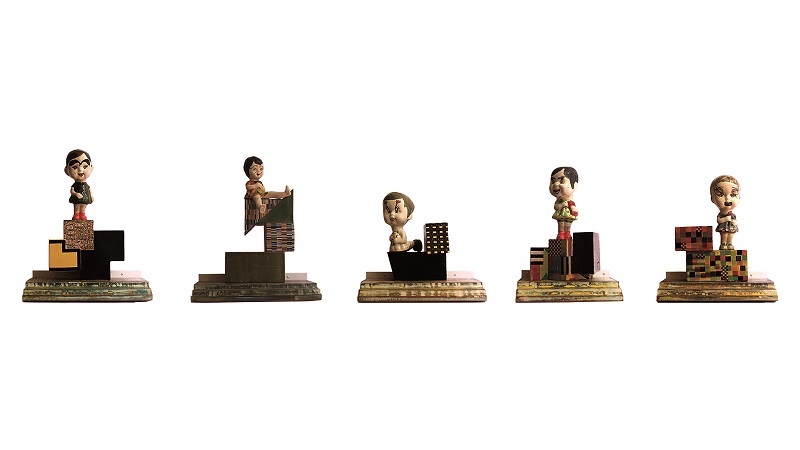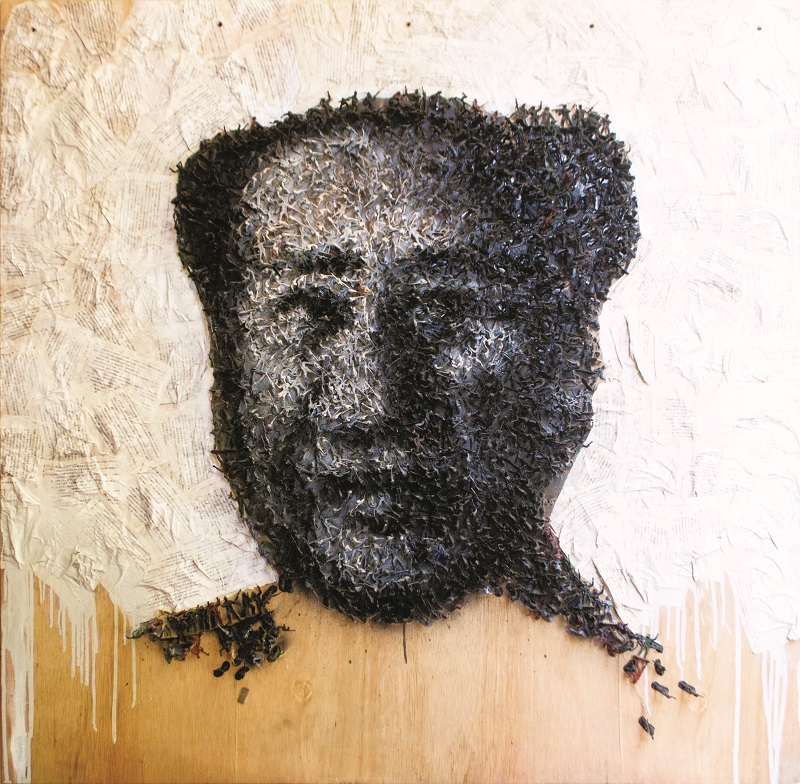
AWA, set deep inside an arctic mountain in Svalbard, Norway, holds valuable digital artefacts and irreplaceable information from around the world (All photos: AWA)
One assumes that data stored using digital technology is for keeps. But natural disasters, societal change, war, hardware and software obsolescence and even risks from the online environment make it demanding to preserve digital memories for centuries.
So, how can we keep documents, stories, films, books, photographs, political histories, music, art masterpieces, scientific breakthroughs, cultural treasures and valuable software alive, secure and accessible for the future?
The Arctic World Archive (AWA) offers a permanent way to store data for posterity. Located 300m inside a decommissioned coal mine on the remote Norwegian island of Svalbard, it is designed to withstand natural and man-made disasters. And there are polar bears for “guards”!
AWA was founded in 2017 by Norwegian company Piql AS, which in 2002 had developed technology that turns photosensitive film into a digital data carrier. The purpose-built digital medium can last for more than 1,000 years in the archive and still be accessible. Data transferred to piqlFilm — a play on the word “pickle” as a synonym of preserve — will still be available no matter how much time has passed because the storage medium is futureproof and technology independent.
Svalbard’s geography and political stability — it was declared a demilitarised zone by 42 nations — ensures security while the cool, dry permafrost conditions of the environment increase the longevity of deposits placed in the facility.
Piql’s storage technology can withstand extreme electromagnetic exposure and has undergone extensive longevity and accessibility testing. That, combined with the safety AWA affords tucked in an arctic mountain, ensures that data in its vaults will live on. Secure in that knowledge, organisations and global corporations have come bearing priceless data and items for protection and safekeeping in the last four years.
burgerbibliothek_bern_-_credit_to_burgerbibliothek_bern_1.jpeg

The National Archives of Mexico and Brazil made the first deposits. Erick Cardoso, IT director at the former, says: “It is an amazing feeling to know that my own nation’s memory will be kept safe for future generations to see on this arctic island.”
Trolls, princes, villains, heroes and a cast of other characters from a collection of Norwegian folktales have found a home in the archive. Sweden’s Moderna Museet virtually deposited a copy of its entire art database of 140,000 pieces, together with descriptions and images.
The Vatican Library has digitally preserved 500 manuscripts, chosen for their historical and cultural value, and the risk of deterioration and permanent loss, in AWA. They include a text written by Luke the Evangelist and a handwritten version of the Quran.
Last month, Malaysia made its first deposit: artworks from the personal collection of U C Loh and Jamal Al-Idrus, co-founders of Artemis Art gallery, which represents and promotes young and emerging Southeast Asian artists. The collection was in conjunction with the launch of Piql Malaysia’s digital Art Provenance Archival Solution.
indonesia_piql.jpg

Restored ancient paintings from the Badami Caves in Karnataka, India; Edvard Munch’s iconic The Scream; 300 life stories recorded between 2006 and 2016 by Brazil’s Museum of Person and 11 interviews with indigenous leaders from different ethnic groups in the country are being kept in the archive, as is sample data acquired by the European Space Agency’s first Earth Remote Sensing satellite launched in 1991.
Poland’s 2018 Nobel Laureate Olga Tokarczuk has stored her life’s work of 14 books in AWA so they will “survive any catastrophe and be an inspiration also for future inhabitants of the Earth”. Wisława Szymborska, the 1996 Nobel winner, has entrusted the repository of world memory with a collection of poetry, letters and other written works so that generations to come can read the Polish poet.
In 2019, Unicef marked World Children’s Day and the 30th anniversary of the adoption of the United Nations Convention on the Rights of the Child. The document is preserved as a DNA file, using emerging data storage technology, and on piqlFilm as a tried-and-tested technology that ensures
future accessibility.
Keeping data for posterity
Preserving a digital copy of an art collection together with its provenance is important for two reasons: it is proof of ownership and authenticity for the collector. That was the pull factor for Artemis Art owners U C Loh and her husband Jamal Al-Idrus when they were first introduced to piqlFilm late last year.
The gallery was set up in 2011 to nurture and promote young and emerging artists from Southeast Asia, with Malaysia and Indonesia as its focal points. Covid-19 forced the co-founders to close their space at Publika, Kuala Lumpur, in mid-January this year and move their shows online. But they remained active in the art scene at home and abroad, and even began looking towards Singapore, the Philippines and China to expand their stable of artists.
“The creative industry has suffered greatly due to the pandemic, and we were not spared. We are optimistic about the journey ahead, and maybe that was one of the reasons to take on the Piql archival solution,” says Loh, on how Artemis made the first Malaysian deposit with Arctic World Archive on Sept 23. She and Jamal could not be there but sent a video to Piql Norway to present during the ceremony.
umibaizurah_mahir_new_kids_in_town_3_variable_size_ceramics_on_mini_shelf_2015-2016.jpg

Together with Piql Malaysia, the gallery developed a range of archival solutions for private collectors and institutions to establish a secure and immutable digital repository for their artwork collection and associated documentation.
“Storing the provenance information on piqlFilm ensures that all proof of authenticity is securely kept as the integrity of the information will last for over 1,000 years,” Loh explains.
The selection of works from their private collection includes those by Malaysians Ajim Juxta, Michael Chuah and Umibaizurah Mahir; Indonesia’s Erica Hestu Wahyuni and Gabriel Aries Setiadi; the Philippines’ Charlie Co and Yeokaa; Chihiro Nakahara from Japan; and Li Wei and Liu Zhiyin from China.
chua_hui_qin_dare_to_struggle_and_dare_to_win_122_x_122_cm_army_toys_novel_and_spray_paint_on_plywood_2019.jpg

Loh hopes their small collection captures the colourful and celebrated diversity of Asia. She and Jamal also recorded short stories of how they procured various pieces — personal memories they want to keep on record, forever. “Sometimes, the stories that led to the buying of the artworks are just as exciting as owning them.”
This month, Artemis is collaborating with galleries in Taiwan to exhibit at the AArt Citizen Art Shanghai fair. In mid-November, it will take part in the ART021 Shanghai Contemporary Art Fair, alongside KL-based Richard Koh Fine Art. The shows will cap a 10th anniversary that could well be recorded for posterity.
This article first appeared on Oct 4, 2021 in The Edge Malaysia.


